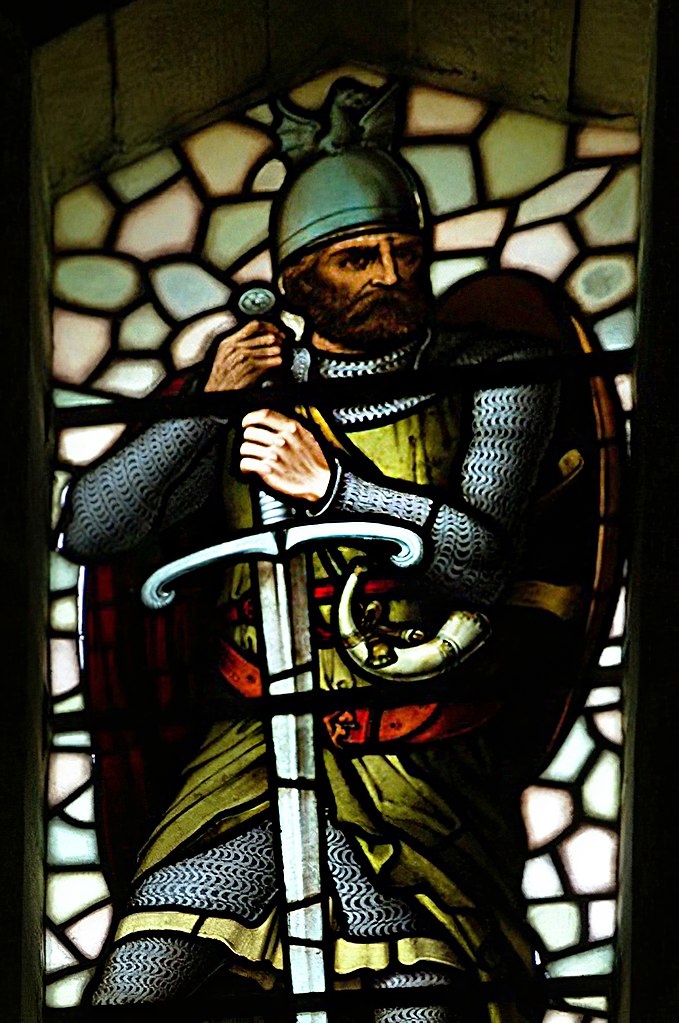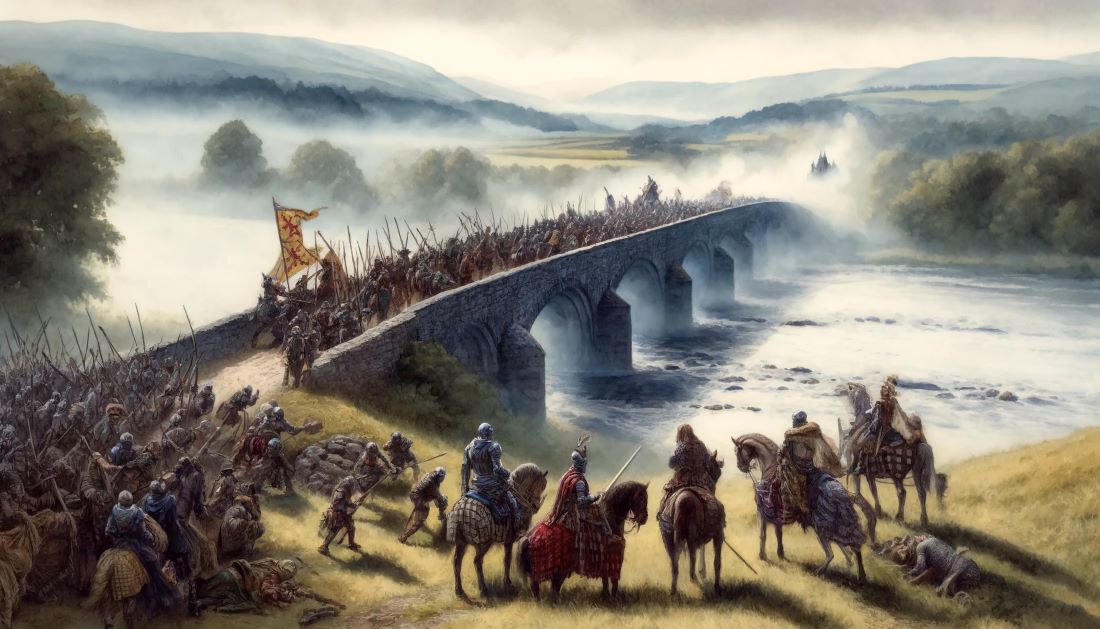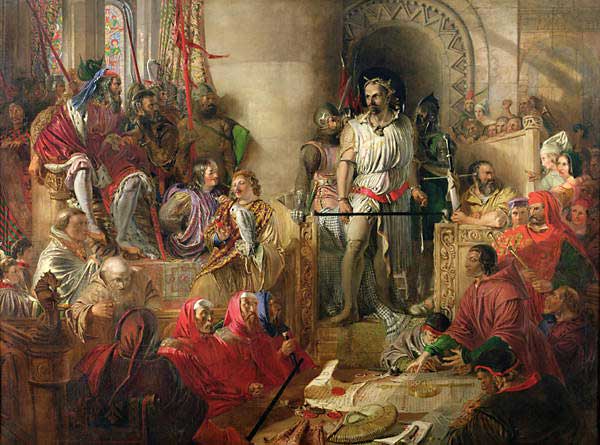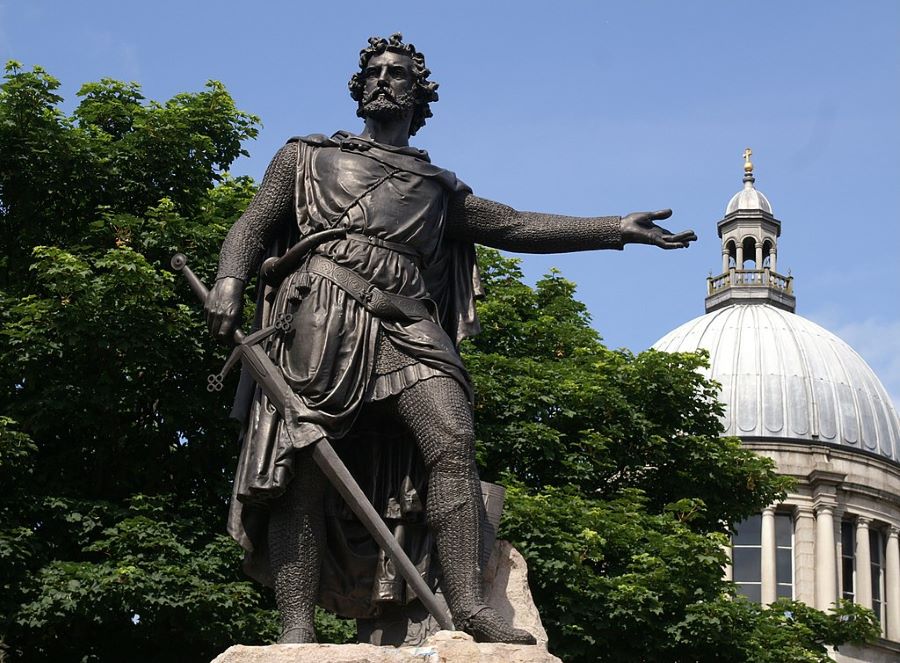William Wallace stands as one of Scotland’s most legendary heroes, whose story reached global fame through Mel Gibson’s cinematic masterpiece, “Braveheart.” However, the question arises – does the film accurately depict the true story of Wallace, and how much of his narrative is woven from legend versus historical fact? As we delve into the life and legacy of William Wallace, we find ourselves navigating between the realms of myth and reality, attempting to separate the man from the myth. This journey invites us to explore the historical truths that underpin the legend of a hero who fought for Scotland’s freedom.
The Origins of William Wallace
Despite William Wallace’s prominent place in Scottish history, his early life remains mysterious, with scant historical records available, particularly before 1297. The first definitive act known to have been carried out by Wallace was his killing of William de Heselrig, the English High Sheriff of Lanark, in May 1297. This event not only marked the beginning of Wallace’s active resistance against English rule but also the moment his legend began to take root. Before this act, information about Wallace was sparse and often entwined with folklore, making it challenging to discern the man from the myth.

Historians speculate that Wallace hailed from a family of lesser nobility or knights, indicating a lineage equipped with the means and the martial tradition necessary for his eventual rebellion. It is believed that his father was a knight, as was his elder brother, suggesting that Wallace grew up in an environment steeped in the chivalric values and military skills of the time. The precise motivations behind the killing of William de Heselrig are layered with various interpretations, ranging from personal vendetta to political rebellion, highlighting the complexity of Wallace’s character and the era he lived in. This blend of scant historical detail and rich speculation paints a picture of a man who would become Scotland’s most enduring hero, though the early canvas of his life still needs to be completed.
The Spark of Rebellion
In 1297, a significant uprising against English rule and Edward I was ignited by Scottish nobles, driven by grievances over oppressive governance and encroachments on their autonomy. Among the rebels, two pivotal groups emerged, one led by William Wallace and the other by Andrew Moray. These factions, initially operating independently, joined forces in early September of that year, forging a formidable insurgent power. This union was not merely a tactical alliance but a symbolic merger of their shared aspirations for Scottish independence. The collaboration between Wallace and Moray’s forces exemplified a critical moment in Scottish resistance, showcasing the strength found in unity against the English encroachment.

Their combined efforts culminated in a significant victory at the Battle of Stirling Bridge. This triumph was not only a military success but also a pivotal morale booster for the Scottish cause. While later narratives often exalted William Wallace as the sole hero of this battle, historical accounts suggest that Andrew Moray played a decisive role in leading the forces to victory. Tragically, Moray was mortally wounded during the battle, a loss that deeply impacted the momentum of the Scottish rebellion. His leadership and strategic insight were instrumental in the victory, marking the battle as a turning point in the struggle for Scottish independence. Moray’s death underscored the sacrifice inherent in the fight for freedom, leaving a legacy that would inspire continued resistance against English domination.
Wallace’s Leadership Post-Stirling
Following the pivotal Battle of Stirling Bridge and the tragic demise of Andrew Moray, William Wallace rose to prominence as the principal leader of the Scottish insurrection. Despite the somber loss of Moray, the aftermath of the battle saw both Moray and Wallace posthumously recognized as Guardians of the Kingdom of Scotland, acting on behalf of King John Balliol. Moray’s passing in late 1297 left Wallace to carry the mantle of leadership alone, propelling him to initiate a series of attacks on Northern England. Contrary to the dramatized retelling in “Braveheart,” Wallace never captured York, Edward I’s martial capital in the Scottish wars. This period underscored Wallace’s strategic limitations, revealing a preference for guerrilla warfare over traditional open-field battles.
The subsequent Battle of Falkirk marked a turning point in Wallace’s military career, where he faced a devastating defeat. This battle highlighted Wallace’s inexperience with managing large-scale troop movements and formal combat strategies, underscoring a stark misjudgment in engaging a superior and more numerous enemy force. The decision to confront the English head-on, despite their logistical struggles, which likely would have led to their withdrawal from Scottish territories, has been debated among historians. Some speculate that Wallace sought to cement his leadership through battle, given his non-noble lineage and the legitimacy of his authority resting solely within the uprising itself. Ultimately, this defeat prompted Wallace to resign from his positions of leadership and guardianship, marking a significant shift in the dynamics of the Scottish struggle for independence.
William Wallace’s Final Days
After the devastating defeat at Falkirk, the dynamics of the Scottish struggle for independence underwent a significant change. William Wallace, having resigned from his role as Guardian of Scotland, continued to resist English rule, albeit in a more subdued capacity. His activities following Falkirk are less documented, enveloping this period of his mystery life. Despite the setback, Wallace remained a symbol of Scottish defiance, moving stealthily and continuing to inspire pockets of resistance across the country. However, his ability to lead a unified national uprising was significantly diminished. The English, under King Edward I, intensified their efforts to capture Wallace, placing immense pressure on Scottish loyalists and employing spies and informants to track his movements.

Wallace’s capture in August 1305 marked the end of his rebellion against the English occupation. Betrayed by a fellow Scot, John de Menteith, Wallace was apprehended near Glasgow and transported to London for a public trial. He was charged with treason and crimes against civilians in war, among other accusations. Despite his assertion that he could not be a traitor, as he had never sworn allegiance to Edward, Wallace was found guilty. His execution on August 23, 1305, was notoriously brutal, designed to serve as a warning to others who might challenge English sovereignty. Wallace was hanged, drawn, and quartered—a fate reserved for those deemed to have committed high treason. His remains were displayed in various parts of England as a stark reminder of the consequences of rebellion. William Wallace’s execution, while intended to quell Scottish resistance, instead immortalized him as a martyr for independence, fueling the fires of rebellion for years to come and cementing his legacy as one of Scotland’s most enduring heroes.
William Wallace – The Legend
Since his death, William Wallace’s life has evolved into a tapestry of legend and myth, captivating the imaginations of generations. The 15th-century poem by Blind Harry has been a pivotal source of these legends, portraying Wallace as a larger-than-life hero who fiercely defended Scotland’s independence against English oppression. Among the most enduring tales from Blind Harry’s accounts is that of Marion Braidfute, Wallace’s supposed wife, whose tragic death at the hands of the English allegedly spurred Wallace into rebellion. The poem also credits Wallace with the daring act of avenging his wife by killing the Sheriff of Lanark, a narrative that has cemented his status as a romantic figure of resistance. While Blind Harry’s poem remains a cornerstone of Scottish folklore, its historical accuracy is debated, with many details at odds with contemporary records or questioned by historians. Despite these discrepancies, the poem has significantly shaped the collective memory of Wallace, blending historical facts with myth to create a symbol of national identity and heroism.

The legends surrounding William Wallace have profoundly influenced Scottish society, contributing to the creation of a national hero who embodies the spirit of independence and resistance. These narratives passed down through centuries, have fostered a sense of unity and pride among Scots, serving as a reminder of their historical struggles for sovereignty. The impact of Wallace’s legend reached a new zenith with the release of “Braveheart” in 1995. Despite historical inaccuracies, the film catapulted Wallace’s story into global consciousness, inspiring a renewed interest in Scottish history and identity. It highlighted the power of myth in shaping heroes and nations, illustrating how legends, even when embellished or partly fictional, can hold a profound truth for a people’s sense of themselves. Through Wallace’s legend, Scotland has found a perennial source of inspiration, a figure who transcends the ambiguity of historical fact to symbolize the enduring quest for freedom and justice.
Historical Challenge: Can You Conquer the Past?
Answer more than 18 questions correctly, and you will win a copy of History Chronicles Magazine Vol 1! Take our interactive history quiz now and put your knowledge to the test!

